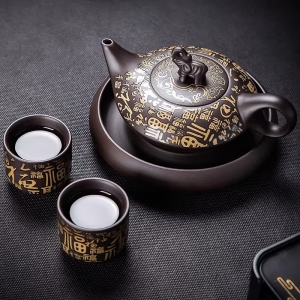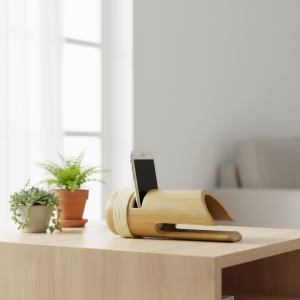Background
Bamboo, often mistaken for a tree due to its towering height and woody stems, is actually a type of grass belonging to the Poaceae family. With over 1,400 species spread across diverse climates from tropical rainforests to chilly mountain slopes, bamboo exhibits an incredible range of forms and adaptations. Some species remain petite, ideal for ornamental gardens, while others, like the giant timber bamboo, can soar to heights of over 100 feet, rivaling many trees. This botanical marvel has been intertwined with human civilization for millennia, serving as a source of food, material, and inspiration across cultures in Asia, the Americas, and beyond.

Why It Matters
One of the most astonishing aspects of bamboo is its growth rate. Certain species hold world records as the fastest-growing plants on Earth, capable of shooting up more than three feet in a single day under optimal conditions. This rapid growth is fueled by a unique rhizome-dependent system, where energy stored underground allows new shoots to emerge with startling speed. Unlike trees that grow from the tips of branches, bamboo culms (stems) reach their full height in just a few months, after which they harden and mature without further vertical expansion. This efficiency makes bamboo not only a wonder of nature but also a highly renewable resource.
The structural properties of bamboo are nothing short of extraordinary. Despite its lightweight feel, bamboo boasts a tensile strength that rivals steel and a compressive strength greater than many concrete mixes. This combination of strength and flexibility allows bamboo to withstand heavy loads and high winds, making it an excellent building material in earthquake-prone regions. Traditional architectures in countries like Japan, China, and Colombia have long utilized bamboo for homes, bridges, and scaffolding. Modern engineers and architects are now rediscovering its potential, incorporating bamboo into sustainable designs that reduce carbon footprints while maintaining durability and aesthetic appeal.
According to a recent study published in the Journal of Sustainable Materials, bamboo forests sequester carbon dioxide at a rate up to 30% higher than many hardwood forests over the same area, highlighting its role in climate change mitigation (Chen & Li, 2023). The research also noted that bamboo’s rapid growth cycle and extensive root system help prevent soil erosion and improve water retention in degraded landscapes. These ecological benefits position bamboo as a key player in reforestation and sustainable land management projects worldwide, offering a natural solution to environmental challenges.
Beyond construction, bamboo’s versatility extends to everyday products that many people use without realizing their origin. From soft textiles like bamboo rayon and linen to durable flooring and cutting boards, this material is transformed through processes that retain its natural antibacterial properties and biodegradability. Even in the kitchen, bamboo shoots are a culinary delicacy in many Asian cuisines, prized for their crunchy texture and subtle flavor. The plant’s hollow stems have also been used for centuries to create musical instruments, water pipes, and traditional weapons, showcasing its functional diversity across human needs.
Cultivating bamboo presents both opportunities and challenges. On one hand, it requires minimal pesticides or fertilizers compared to conventional crops, grows in marginal soils, and can be harvested without killing the plant, allowing for continuous regrowth. On the other hand, some invasive species can spread aggressively if not managed properly, leading to ecological imbalances. Responsible farming practices and selecting clumping rather than running varieties help mitigate these issues, ensuring that bamboo cultivation contributes positively to local ecosystems and economies without unintended consequences.
Looking ahead, bamboo stands at the intersection of tradition and innovation. Researchers are exploring new applications, such as bamboo-based biofuels, biodegradable plastics, and even reinforced composites for the automotive and aerospace industries. Its low environmental impact and high yield make it an attractive alternative to more resource-intensive materials. As global interest in sustainability grows, bamboo is poised to play an increasingly important role in green economies, offering solutions that are both ancient and urgently modern. Embracing this remarkable grass means tapping into a resource that embodies resilience, adaptability, and harmony with nature.
You may also like
Aladdin’s Lamp Heat-Change Purple Clay Tea Pot
Original price was: $108.00.$78.00Current price is: $78.00. Add to cartGuangxi Zhuang Brocade Handmade Tote – Ethnic Boho Large-Capacity Shoulder Bag
Original price was: $172.00.$150.00Current price is: $150.00. Add to cartThe Palace Museum Paper-Cut Light Art Fridge Magnets: Chinese Cultural Style Creative Gift Series
Price range: $27.00 through $36.00 Select options This product has multiple variants. The options may be chosen on the product pageAncient Craft Herbal Scented Bead Bracelet with Gold Rutile Quartz, Paired with Sterling Silver (925) Hook Earrings
Original price was: $322.00.$198.00Current price is: $198.00. Add to cartAncient Craftsmanship & ICH Herbal Beads Bracelet with Yellow Citrine & Silver Filigree Cloud-Patterned Luck-Boosting Beads
Original price was: $128.00.$89.00Current price is: $89.00. Add to cartBambooSoundBoost Portable Amplifier
Original price was: $96.00.$66.00Current price is: $66.00. Add to cart













